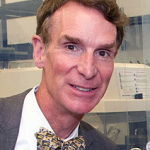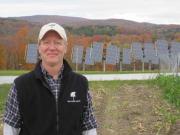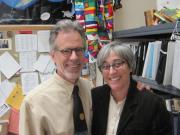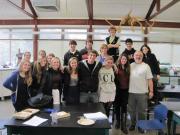We Can Do This: Education, Energy and Climate Change
In early May I participated in an inspiring conference at Stanford called “Setting the Climate Agenda for the Next U.S. President” and came away with renewed optimism. Joining with several hundred educators, researchers, government officials and business leaders, we reflected on the “strategies the next President might employ to reduce greenhouse gas emissions and accelerate the United Stated’ pivot to a clean energy economy.” At a time when the challenge of climate change can seem daunting, especially to those like me who work with the rising generation in K-12 schools, this meeting gave me renewed hope. As keynote speaker and former secretary of state, George Schultz, observed, “Climate change is a big problem, we have the technical know-how to address it, and we can do this.”
The conference itself featured twenty national leaders who described the challenges and opportunities to address climate change. The echoed George Schultz’ opening comment that the Presidential energy plan requires the White House and Federal Government to facilitate a non-partisan effort, provide incentives to states, support university research, and stimulate innovation and entrepreneurial partnerships with business. Former Michigan Governor Jennifer Granholm argued that given congressional gridlock it is imperative that presidential leadership establish baseline Federal requirement in energy efficiency and renewable power that go “beyond the current clean power plan,” create state “industrial clusters” for energy innovation, and an American Jobs Project to significantly increase employment in selective state green tech programs. Arun Majumdar, former Acting Undersecretary for Science and Energy at the U.S. Department of Energy captured our enormous challenge in a single side illustrating the exponential rate of change in four interrelated areas—GDP, energy use, population, and greenhouse gas emissions—while describing a top ten list of innovations from more efficient solar photovoltaics to advance batteries.
 The conference was hosted by several Stanford programs including the Precourt Institute for Energy, which is co-directed by Sally Benson.
The conference was hosted by several Stanford programs including the Precourt Institute for Energy, which is co-directed by Sally Benson.
I was delighted to discover that she graduated from the Anna Head/Head-Royce School, where I served as principal for many years, and to learn that after her education at Barnard and UC Berkeley she has become one of country’s foremost scientists. She moderated a panel discussion of ways to expand the clean energy economy that included Jagdeep Bachher, Chief Investment Officer for the UC System, who described a significant initiative funded by Bill Gates called the Breakthrough Energy Coalition, a consortium of 27 co-investors plus the UC System that involves 20 countries in an effort to double investment in energy research and development.
Stanford’s remarkable leadership in developing the clean energy economy through research and development, entrepreneurial partnerships, and innovative education was showcased throughout the conference. Chair of the Stanford Board of Trustees Steve Denning proudly described the university’s commitment to sustainability. The university boasts 14 energy research centers and programs, and its Sustainable Stanford initiative integrates sustainability into academics, operations and campus life through over 300 energy related course as it seeks to prepare the next generation of environmental leaders and stewards. In an amazing application of its expertise, the university put into operation a state-of-the art energy system that combines a heat-recovery process and solar energy that has reduced greenhouse gas emissions 68% and will save $420 million over the next 35 years.
 The night before the conference, the Graduate School of Education featured Bill Nye the “Climate Guy,” famous for his long-running TV program popularizing science education.
The night before the conference, the Graduate School of Education featured Bill Nye the “Climate Guy,” famous for his long-running TV program popularizing science education.
He spoke about his own passion for addressing the challenge and urged the the overflow audience in Memorial Auditorium to take individual responsibility and action. And he described Stanford professor Mark Jacobson’s Solutions Project, an ambitious 50-state roadmap to replace coal and oil with natural gas, solar, wind and water energy by 2050.
As a long-time public and private school teacher and principal, I was inspired to think anew about a special challenge facing K-12 education: how to increase the energy efficiency is our schools at a much faster rate. With over 50 million students nationwide, our K-12 schools account for seven percent of all energy used by commercial buildings at a cost of $6 billion, according to the US Department of Energy. As part of the effort to develop a clean economy, I hope Stanford can help effect a transformation in the use of energy in our K-12 schools.









